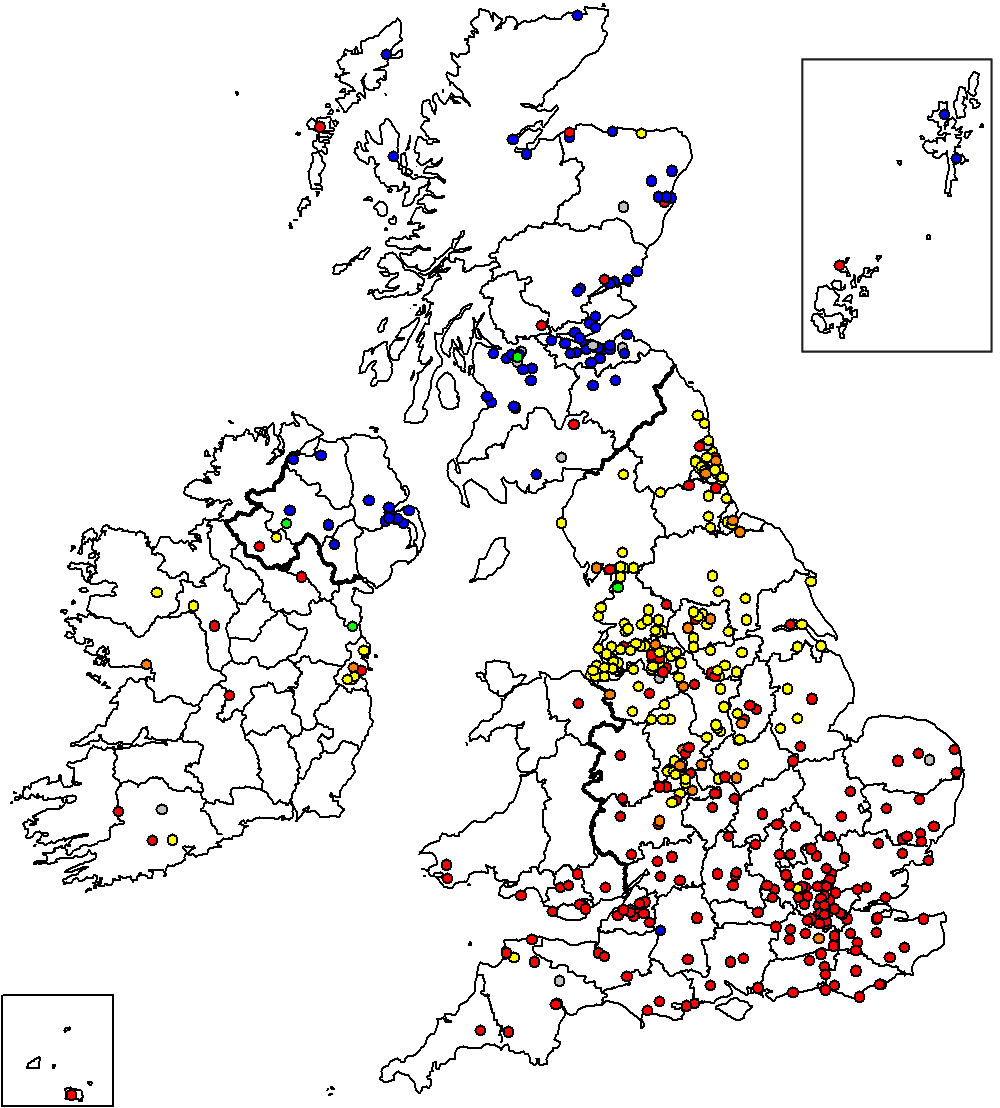Which of the words gut, foot and hoot rhyme for you?
- gut and foot rhyme, hoot rhymes with neither
- foot and hoot rhyme, gut rhymes with neither
- gut and hoot rhyme, foot rhymes with neither
- They all rhyme
- None of them rhyme
- Blue: foot and hoot rhyme only (the 'Scottish' system)
- Green: foot and hoot rhyme, and gut and foot rhyme (mixture of the 'Scottish' and 'Northern' systems)
- Yellow: gut and foot rhyme only (the 'Northern' system)
- Orange: gut and foot rhyme, and none of the words rhyme (mixture of the 'Northern' and 'Southern' systems)
- Red: none of the words rhyme (the 'Southern' system)

The 'Scottish' system (foot = hoot) is, as its name suggests, mostly found in Scotland, but it is also found in Northern Ireland, and it is almost entirely absent elsewhere. This is the expected distribution for the 'FOOT-GOOSE Merger' (see Wells 1982: 133).
The 'Northern' system (gut = foot) is characteristic of the north Midlands and northern England, and of parts of Ireland. This unity of the STRUT and FOOT lexical sets is perhaps the most well known feature of northern English speech (see Chambers and Trudgill 1980: 127-9), although the current sparsity of questionnaire returns from parts of the Midlands means that the southern boundary of this feature is not clearly identifiable.
The 'Southern' system (none of the words rhyme) is most characteristic of southern England, but there is plenty of evidence for this pattern in northern England too, which is not surprising, given the demographic of the respondents to this questionnaire (see also Wells 1982: 351-2).